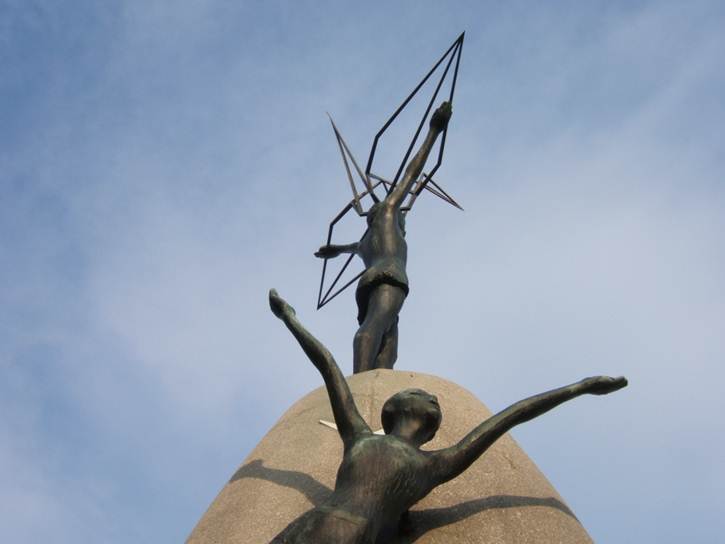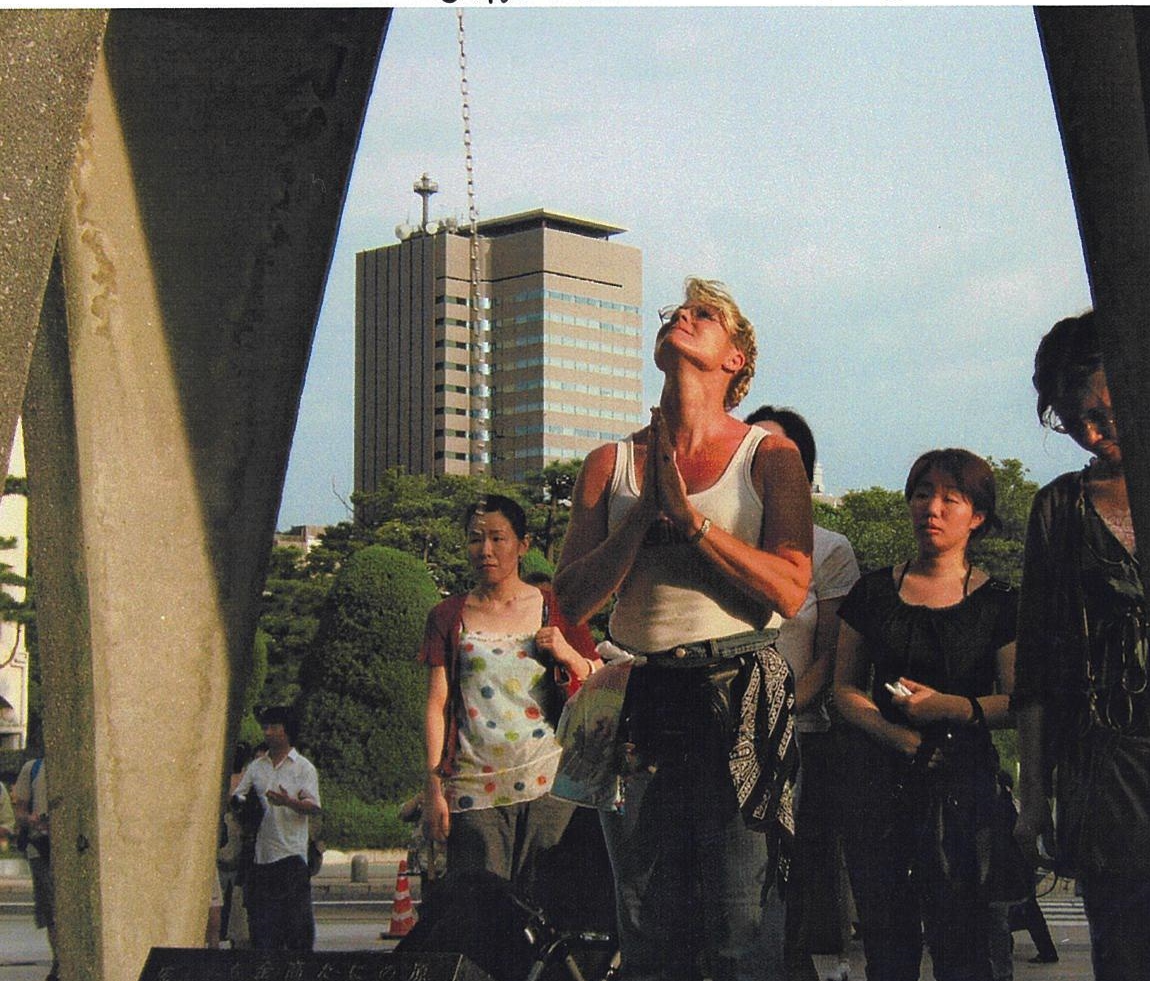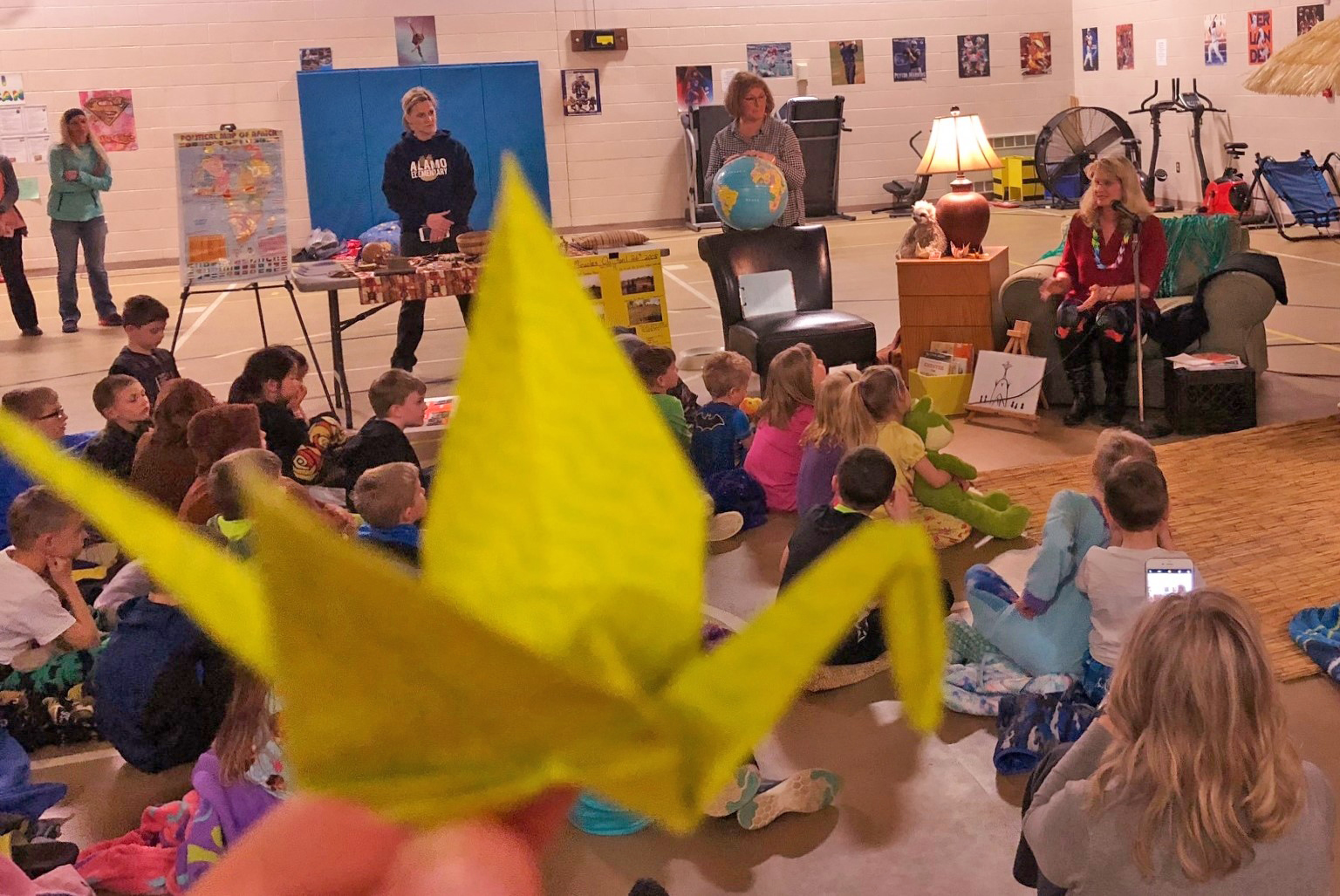Why I make Japanese origami cranes
Friends, colleagues and family will watch me make Japanese origami cranes and ask, why I make them all the time. This is why.

The question, “Why do you make origami cranes?” has been asked of me many times by family, friends, colleagues and even complete strangers as they watch me making an origami crane from whatever paper is available in the moment. At restaurants, my servers will always have a tiny origami crane made from the napkin paper added to their tip. After long meetings, cranes made from gum or candy wrappers will be found on the tables. During airplane rides, little kids will be playing with the cranes I give them to keep them occupied. And when I just need a fidget activity, my hands will go to work creating origami cranes.
To answer their question, I explain how I started making cranes many years ago when hosting a Japanese guest through the Michigan 4-H International Exchange Summer Program through States' 4-H International. Our Japanese guest quickly became a part of our family she shared the story of "Sadako & 1000 Paper Cranes" by Eleanor Coerr with us. This started my crane-making obsession after she taught me how to make the origami cranes.
During that time, my Japanese friend and I went into an elementary school, taught over 100 students how to make the cranes and briefly explained the story about when someone gives you an origami crane, it represents friendship, good health and world peace. The school turned it into an opportunity of global education and service learning as the students gave their cranes to the Make a Wish Foundation to give to the children in the hospital to make wishes for good health. I have since heard or read of other schools doing similar projects as they learn about WWII and Sadako Sasaki.
According to Japanese tradition, folding 1,000 paper cranes gives a person a chance to make one special wish come true. The crane is believed to live for 1,000 years and that is the meaning behind 1,000 an individual needs to fold.

In 2005, I was honored to be the Michigan 4-H outbound chaperone through the States’ 4-H International Japan outbound summer program. During this trip, it so happened to be the 60th anniversary of the WWII atomic bombing in Hiroshima, Japan. My host family took me to the museum and the Children’s Peace Monument for an experience I will never forget.
Seeing first hand some of the tiny origami cranes made by Sadako herself, photographs and the Children’s Peace Monument moved me to tears. It is here I found why the origami crane has become a symbol of peace and because of the young Japanese girl named Sadako Sasaki who died of leukemia from the atomic bomb. I learned the ceremonial process, made and placed a golden origami crane under her statue, and I continue sharing the story with whomever I meet.
When I was the Michigan 4-H inbound coordinator through States’ 4-H International Exchange, a host family had a daughter fighting leukemia just like Sadako. Her Japanese host sister had a certified origami crane that she made placed at the Peace Memorial for her Michigan sister. This shows how the event between two cultures continues to be shared in a peaceful way.
My crane-folding passion became stronger after I found out that a childhood best friend had cancer. According to the tradition, anyone with the patience and commitment to fold 1,000 paper cranes will be granted their most desired wish because they have presented the cranes' loyalty and refashioned their beauty. Knowing this, I made my friend 1,000 origami cranes and my wish was for her good health and to beat the cancer. It took two years to accomplish this goal and my friend is still in remission! I have since also made cranes for friends and other family members in need of good health wishes, carefully writing special messages inside each crane I fold.

I have found that my obsession of making cranes can be contagious. After doing origami “art science” (yes, origami is science engineering!) with elementary students, the teacher later shared with me her story. She said that while waiting in the lobby for an oil change, she decided to read the “Sadako & 1000 Paper Cranes” book I had given to her to highlight in the spring school cultural program. She fought back tears heartened by the story and shared the origami art science program I had done at the school and the reason for reading the book to the other individuals in the lobby that day. The next thing she knows, they are all having a wonderful cultural conversation about origami, art science and asking the oil station receptionist for paper to try and make origami cranes!
She also told me how a friend visiting the school library saw the origami art display I had left. After explaining the program I had conducted, this individual became very excited about origami and utilizing it at the women’s prison where she volunteered. She took some origami simple instruction samples I had provided and taught the 200 women at the prison (they are not allowed scissors, crayons, etc., thus just paper folding is a perfect medium for them). She shared that they were super excited, loved doing the activity and would like to learn more!
Another 4-H leader shared with me how she took the crane-making activity to her social studies class and how the hands-on learning of making the cranes solidified the student’s learning about WWII and the bombing of Hiroshima. Furthermore, she stated how some of her students were moved to tears when she read the Sadako story. Empathy has been a challenge to teach and she found that making the cranes were an unexpected way to teach empathy to her students.
The next time you are watching a television commercial where the dad folds origami cranes from gum wrappers for his daughter, or you watch a video about a Romanian origami artist that makes beautiful cranes for emotional health reasons, you now have an idea why they are making the origami crane. The Japanese “senbazuru” has also become a symbol of hope and healing during challenging times. Sadako Sasaki's family donated some of her origami cranes to Honolulu, Hawaii, to promote peace and overcome the tragedies of the past and the cranes are on display in Pearl Harbor, where the 1941 Japanese attack launched the two nations into war.
Next time you see thousands of cranes made and displayed after a tragedy, at an art exhibit or receive an origami crane from a Japanese friend or myself, you now know why I make origami paper cranes.

“Thousands Origami Cranes Project” is a continuous personal goal that I have in my global and cultural 4-H programming. I will make and teach how to create origami cranes with special messages written inside at various 4-H events and workshops like the Kettunen Center in Tustin, Michigan, Michigan 4-H Exploration Days, Michigan 4-H Creative Arts Celebration, Allegan/VanBuren County 4-H Camp Kidwell summer program, W.K. Kellogg Biological Station Bird Sanctuary and wherever invited to do global and cultural 4-H programming.
Participants will be using the 4 “H’s” of the clover, using their head in global knowledge, heart in empathy/love, hands in creativity, and emotional/physical health wishes for their club, community, county and world. Participants making the cranes may even gain a new passion like myself, visually symbolizing friendship, good health and world peace.
If you want to learn how to make an origami crane the way I do, watch the close-captioned video below.
Maybe you have become inspired to create your own story on why you make origami cranes.
Michigan State University Extension and the Michigan 4-H Youth Development program help to prepare youth as positive and engaged leaders and global citizens by providing educational experiences and resources for youth interested in developing knowledge and skills in these areas.
For more information about 4-H learning opportunities and other 4-H programs, contact your local MSU Extension office. Visit the Michigan 4-H International Exchange Programs for information on hosting exchange students or traveling.



 Print
Print Email
Email

